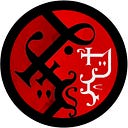The Glass Horn and Gnomes
DUST DESERTS & LIGHTNING FORESTS
After the Collapse, the Elemental planes “crashed” onto the Material World randomly and chaotically. Some of the elemental shards ended up near each other, interacting and creating new and exotic environments. The northeast part of the Uxali continent hosts one of these strange habitats, the Glass Horn, a peninsula where Lighting and Dust meet.
By the coast, the climate is dry and hot but lush in its own way, with maritime pine forests, curated olive groves, and maquis shrublands full of small and colorful flowers. The more you venture inland and southern, the more things change: the environment becomes arid, and a layer of dust covers everything. The powder builds up, more and more, becoming dunes and then a desert the swallows the rocky mountains of the interior. The speckles are almost invisible in isolation, revealing themselves only in large amounts. They are so light that some of them are suspended even in the calm air, giving a perpetual violet haze in the distance.
It’s “Dust Deserts”, plural, because the dunes move so much that the landscape change from season to season in an unpredictable way, creating ever-changing landscapes: every few months a new desert seems to have taken the place of the one there was.
The Elemental Dust is very responsive to magic as it “soak” mana unleashed by spells (for this reason is categorized as a Negative Element). It’s a material easy to enchant to make “powdered” potions of various effects. This dust is also the raw material for Gnomish Illusion Magic: the fine speckles can easily change color and take different configurations. Gnomish Illusionists can simulate textures and smells (a thing that Light and sound manipulation can’t obtain), and their figments can fool all kinds of observers, as they are independent of the mind (opposed to psychic illusions). Dying in the deserts may generate an Undead, as a soul may leave a “print” in the dust: simulacra of people long gone can still wander the dunes, walking in circles, caught in mental loops.
The mountains of the Horn cover a piece of the Plane of Lighting: electricity exits the rocks in groups, not like quick bolts but as coils that keep their branched shapes, flickering slightly. All of this gives the impression of small groves of trees made of electricity: the Lightning forests. These lightning bolts, frozen in a permanent seizure, are not made from “normal” electricity but from Elemental Lightning, which is full of Life Force (not exactly the same as the one from living creatures, but it’s not the place to enter in details). This electricity is a “positive element” and therefore can be consumed for sustenance by some animals. The Thunder Oryxes and other grazing animals mutated to eat the energy coils as they were plants.
Dust and Lighting interact in various ways, mainly creating the glass that gives this region its name. When the speckles hit the bolts they coalesce in fulgurite, a glass-like mineraloid. Usually, the dust is brought by the wind through the lighting “branches” and it forms small transparent marbles that drop in the ground. But sometimes the speckles remain trapped for more time, usually due to whirlwinds and swirls, and end up creating big opaline stones, the “Storm Fruits”. Other objects are created throughout different interactions: “mirror puddle” is created when, during a storm, a bolt of elemental lightning touch “normal” lighting and explode in a blast of light; “thunder roots” are created when a dune covers entirely a coil; and so on.
The glass obtained by the melting and shaping of Fulgurite has many properties, depending on the kind of elaboration. Common Glass objects are magic-containing jars, mana-seeing lenses, and illusion mirrors. The rarest and most coveted glass artifact is the “power crystal”, a cut and polished Storm Fruit: it is the only non-living thing that can fuel spells, as it radiates “life force” (but they will eventually deplete).
GLASS & GOLD
The gnomes have always kept themselves apart from the wider politics of the world, more interested in admiring the sky with their telescope or analyzing the minuscule with their magnifying lenses.
They are jealous of their discovery and distrustful of outsiders.
Only three times they have been attacked, but they always fended off their invaders with powerful magic and underhanded strategy: their use of illusions and enchantment make the gnomes formidable spies and assassins, and the study of their elemental territories unlocked the power of dreadful spells, like the disintegration rays.
Gnome love crafting, especially refined and delicate things: metal filigranes, evanescent embroidery, and of course glass in all its possible shapes and uses.
Their objects are exquisite and much desired by nobles everywhere but its not easy to get them.
Now the world is in (relative) peace and more connected than ever before, but the gnomes keep their wariness: merchants who want to do business with the gnome guilds must prove trustworthy. Before signing any contracts you’ll have to live for some months in the country, learn the langue and the traditions, wear their Djinn-inspired dresses, and eat their delicate (and always too small) dishes. It is worth it? Well, a globe of glass with a small lightning inside can fetch you a bag of gold, so yes.
